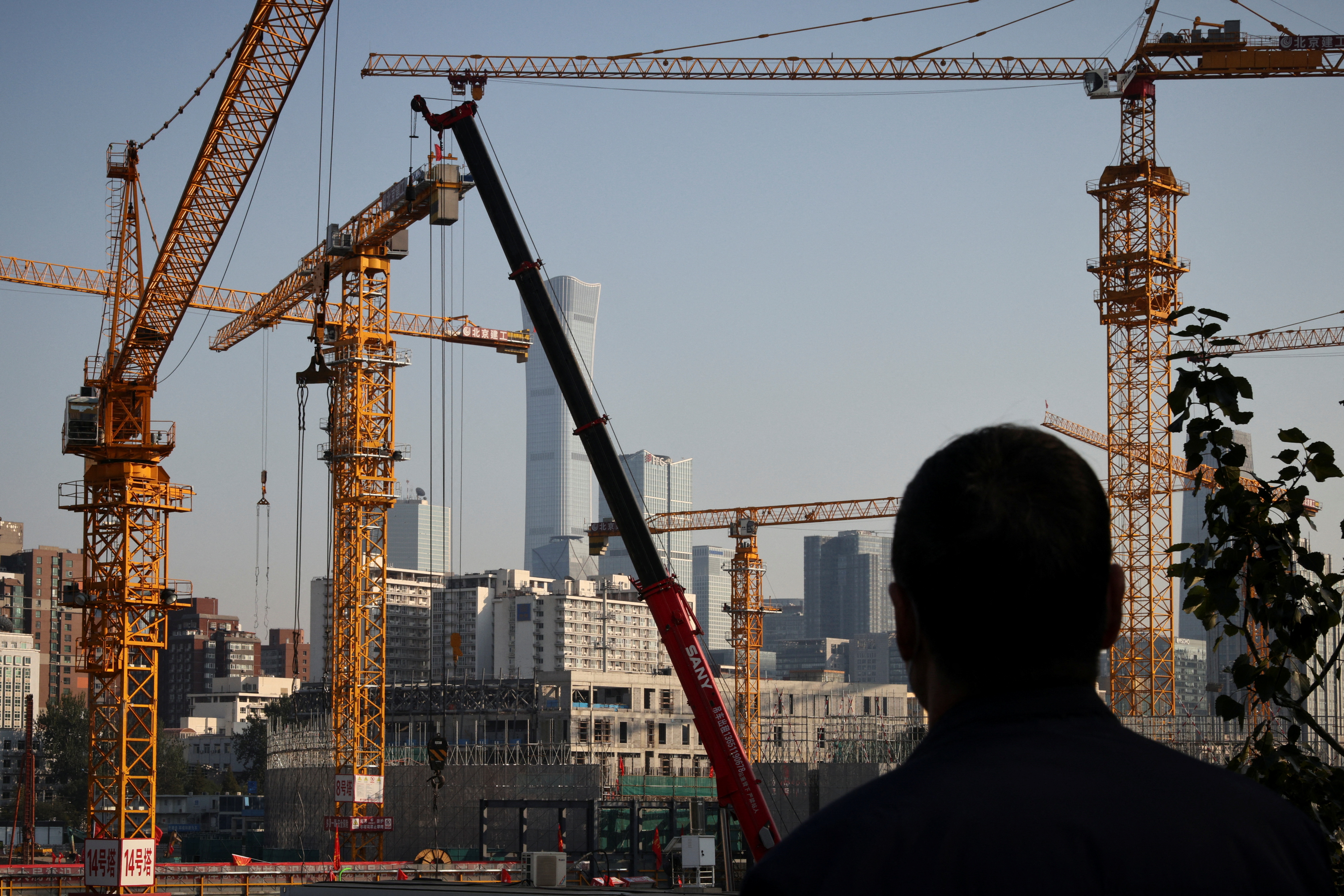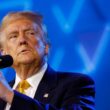Since early 2020, China’s Hang Seng Index has faced consecutive declines, primarily driven by economic challenges and pandemic-induced restrictions. Both mainland China and the semi-autonomous Hong Kong region have experienced a prolonged downturn, sparking concerns about the broader economy.
However, a surprising turnaround occurred in late September when China’s top leadership unveiled a series of measures aimed at rejuvenating the struggling economy. This led to an 18% rally in the Hang Seng Index—the largest two-week gain in nearly two decades. Yet, some analysts, argue that these stimulus measures should have come much sooner. Nonetheless, the market has welcomed the initiative with cautious optimism, underlining the principle of “better late than never.”
While the stock market has responded positively, the question is whether these gains will spill over into the real economy, which is struggling with the threat of a deflationary spiral.
China’s economy is at risk of missing its 5% growth target, and the recent monetary policies introduced by Beijing may not be enough to change the trajectory. These measures, which primarily focus on controlling inflation and managing borrowing costs, are seen by many as insufficient.
Economists at Nikko Asset Management emphasize the need for stronger fiscal policies, noting that “the elephant in the room seems to be a lack of consumer confidence.” For a more profound economic rebound, the authorities may need to deploy “the big guns”—significant fiscal initiatives that address this crisis of confidence and stimulate risk appetite.

Consumer Confidence at a Low
At the heart of China’s economic struggles is a growing crisis of confidence.
Consumer sentiment is low, multinational corporations are pulling out at unprecedented rates, and the property sector faces its own set of woes, from half-built homes to mounting bad debts. This downturn is further compounded by a lack of transparency, as mistrust in government-released data deepens.
Many suspect that sensitive information is being withheld, massaged, or selectively disclosed, contributing to a growing void in public knowledge. As the economy continues to show fragility, this information gap is adding to the anxiety, hindering any meaningful recovery in consumer or business sentiment.
China’s long-term ambition to restructure its economy around new industries may also be at risk due to this backtracking on information transparency, a policy that had been progressively liberalized for decades. Without trust and clarity, the path to reform becomes murkier.
China’s Ray of Hope
With the National Development Reform Commission set to announce a new economic stimulus package, there is hope that Beijing’s leadership is finally ready to act decisively after years of delays.
However, what is yet to be seen is whether these measures will be enough to reignite consumer confidence and put China back on a path of sustainable growth. While opinions among economists differ on the precise actions needed, the consensus is clear that time is running out, and bold, transparent steps are needed to prevent the world’s second-largest economy from stalling.
The conclusions drawn stem from the optics of a rare joint press conference held on September 24 by three key financial figures in China: Pan Gongsheng, Governor of the People’s Bank of China, Li Yunze, Minister of the National Financial Regulatory Administration, and Wu Qing, Chairman of the China Securities Regulatory Commission. According to economists at Nikko, the manner in which this press conference was conducted signals a significant shift.
“In an opaque system where every action is closely analyzed, the first thing that stood out was how the official announcement was made,” they explained. Gone are the days of deciphering ambiguous statements that leave too much open to interpretation. The event saw China’s financial leaders directly address both local and international journalists, indicating an attempt at transparency regarding major policy changes.
During the conference, Pan announced cuts to key interest rates and reduced the amount of reserves that banks are required to hold. He also introduced measures aimed at supporting the struggling property sector, including cuts to existing mortgage rates and lowering the minimum downpayment from 25% to 15% for second-time homebuyers. Many economists consider the property market the core issue behind China’s broader economic challenges.
HSBC economists, led by Jing Liu, called the press conference “unusual” in an investor note, observing that multiple significant actions seem to be happening simultaneously. However, they believe this is just the beginning of China’s economic adjustments. HSBC anticipates Beijing will announce one trillion yuan ($142 million) in fiscal spending on consumer goods or large infrastructure projects, which would directly stimulate the economy.
Additionally, HSBC speculated that another one trillion yuan may be allocated to recapitalize banks or help local governments manage debt by issuing bonds. Although these measures might not immediately stimulate the economy, they could reduce financial risks.
According to Reuters, China is also preparing to issue special sovereign bonds worth about two trillion yuan ($284 billion) as part of an additional fiscal stimulus package. The funds raised are expected to be used for various subsidies, including encouraging the purchase of larger household appliances and upgrading business equipment. Some of the money will also go toward a monthly allowance of about 800 yuan ($114) per child for families with a second or younger child.
Some economists believe that Xi Jinping’s leadership has room to be more ambitious in its spending plans. Analysts at Barclays have speculated that a 10 trillion-yuan fiscal package spread over two years could significantly boost the economy, potentially adding a full percentage point to growth. However, this remains speculation for now.
Experts agree that any substantial stimulus must address the oversupply issue in the property market. Chi Lo of BNP Paribas Asset Management noted last week that while the recent policy shift had sparked a rally in Chinese stocks, sustaining this recovery will require stronger conviction and further action.
Jia Kang, formerly the director of a think tank affiliated with the Ministry of Finance, emphasized the importance of ramping up fiscal measures alongside monetary policy adjustments. He suggested that Beijing could issue up to 10 trillion yuan ($1.4 trillion) in long-term government bonds to fund critical infrastructure projects.
Jia, now head of the China Academy of New Supply-side Economics, argued that such bond issuance is “not unreasonable,” pointing to China’s response to the 2008 global financial crisis when the country issued a four trillion yuan ($570 billion) fiscal package. He added that China’s economy has grown sufficiently since then to support a bond issuance of four to 10 trillion yuan today.

Snapshot
China’s economy is currently facing a range of complex challenges, each of which is exerting significant pressure on the country’s growth prospects and stability.
1. Real Estate Downturn
The real estate sector, long a pillar of China’s economic growth, has experienced a significant downturn. Property values have fallen, eroding household wealth and reducing consumer spending. The collapse of Evergrande, one of China’s largest real estate developers, has had a ripple effect throughout the industry.
As Evergrande’s massive debt burden came to light, other developers also began facing financial difficulties, leading to project delays, halting of construction, and in some cases, unfinished properties being left unsold. This has shaken consumer confidence in the real estate market, traditionally seen as a reliable investment. The broader impact on the economy has been severe, as construction and related industries have slowed, contributing to falling prices and increasing the risk of a deflationary spiral.
2. Overinvestment
For years, China pursued aggressive investment in industrial production facilities and infrastructure, aiming to maintain its rapid economic expansion. However, this strategy has now led to overinvestment, particularly in sectors like steel, cement, and heavy manufacturing, resulting in a significant oversupply of output. With excess production capacity and insufficient demand, many firms are struggling to stay profitable.
This has left cities and companies with heavy debt burdens, as much of this investment was funded by loans.
The risk of a deflationary spiral looms, where falling prices lead to reduced profits, causing firms to cut investment further, leading to more layoffs and decreased consumer spending. Chinese firms, especially in overbuilt sectors, are finding it difficult to reduce this excess capacity without exacerbating unemployment, a politically sensitive issue.
3. Geopolitical Tensions
Geopolitical tensions are increasingly impacting China’s economic health. Trade restrictions and tariffs imposed by the United States, the European Union, and other nations have reduced international demand for Chinese goods. In particular, the US-China trade war has severely impacted sectors such as technology and manufacturing.
Export-dependent industries are feeling the pinch, as tariffs and sanctions make it more expensive and difficult to access key foreign markets. Furthermore, concerns about supply chain security, particularly in high-tech sectors like semiconductors, have led to moves by Western countries to decouple from Chinese suppliers.
This is straining China’s export engine, a critical component of its economic model. Additionally, the broader geopolitical landscape—marked by tensions over Taiwan, the South China Sea, and China’s Belt and Road Initiative—has created an environment of uncertainty, making it harder for China to forge stable trade relations.
)
4. High Debt Levels
China’s debt levels, especially in the corporate sector, have reached worrying heights. Many companies, particularly in real estate and heavy industry, borrowed heavily during the boom years, and now find themselves with unsustainable debt loads as demand falters.
Moreover, the government has had to step in to provide liquidity and bail out struggling firms, further straining fiscal resources. This high corporate debt is compounded by fiscal pressures faced by some of China’s poorer provinces, where tax revenues are shrinking due to economic slowdowns.
In particular, local governments have accumulated substantial debt as they borrowed to finance infrastructure projects that are now underperforming. Managing this debt while trying to stimulate economic growth without triggering a financial crisis is one of Beijing’s key challenges.
5. Regional Income Gap
China’s economic success has not been evenly distributed, and the gap between wealthy coastal cities and poorer inland provinces is widening. While regions like Beijing, Shanghai, and Shenzhen have thrived, benefiting from high levels of investment and global trade, many interior provinces have struggled to keep pace.
These poorer provinces generate less tax revenue and face higher levels of local government debt, which constrains their ability to invest in essential public services or infrastructure improvements. This regional disparity is leading to social tensions, as residents of less developed areas feel left behind in China’s economic progress.
Moreover, these regions are often more dependent on industries like coal mining and heavy manufacturing, which are facing structural declines as China seeks to transition to a more sustainable, high-tech economy. Addressing this income gap is crucial for ensuring long-term stability and social cohesion.
China’s economy is at a critical juncture. With challenges stemming from a real estate slump, overinvestment, geopolitical tensions, soaring debt, and regional inequality, the country faces the delicate task of balancing short-term stabilization with long-term structural reforms. How it manages these issues will be crucial in determining the future direction of China’s economic growth.









